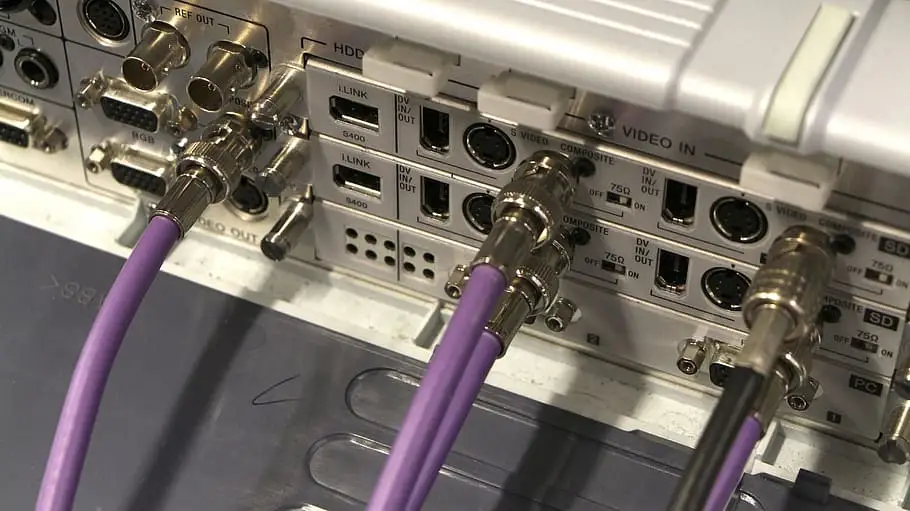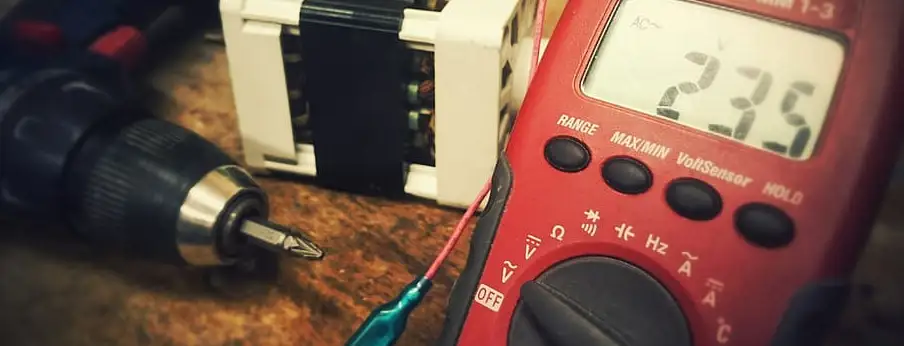Playing an instrumental role in understanding the behavior of electrical audio signals, impedance is defined by and measured through their interaction with the audio equipment. In audio systems, impedance refers to the measure of opposition that an electrical circuit presents to the flow of alternating current.
Matching the impedance of audio devices, such as amplifiers and speakers, is essential for optimal performance and sound quality. For instance, passive speakers have a load impedance, which represents the electrical resistance and reactance they present to the amplifier.
In electrical engineering, impedance is often compared to the concept of resistance. To ensure proper impedance matching, it is generally desirable to have high input impedances and low output impedances.
So, what is impedance in audio? Well - put most simply - it is a form of resistance (measured in ohms), caused by the electrical pressure of an alternating current (measured in volts), which in turn is caused by the audio signal.
So, Is "Impedance" Just Another Word For "Resistance"?
Not really. Resistance, as defined by Ohm's Law, is the opposition to the flow of electrical current in a circuit. Impedance is also measured in ohms, but unlike resistance, it considers both magnitude and phase relationships between voltage and current in an AC circuit. In audio systems, impedance becomes particularly relevant due to the presence of alternating current and the complex nature of audio signals.
In audio systems, impedance matching is crucial for efficient power transfer and optimal performance. As touched upon above, passive speakers have a load impedance that interacts with the amplifier's output impedance. Impedance matching between the speaker and amplifier ensures that the maximum power is transferred to the speaker and prevents signal degradation or loss of power.
While resistance and impedance are both measured in ohms, they have different characteristics and implications in electrical circuits. Resistance is a measure of the opposition to current flow in a circuit, whereas impedance incorporates the effects of reactance, which is relevant in AC circuits and the complex nature of audio signals.
The difference between resistance and impedance in the context of what is impedance in audio, is that the former is usually used as a parameter when describing a direct current with a constant voltage, whereas the latter is related to alternating current whereby the signal affects the voltage and the direction of the current (stronger signal = more power).
Input, Output & Characteristic Impedances

According to Ohm's Law, the voltage across a component is equal to the current flowing through it multiplied by its impedance, whose value (again: measured in ohms) affects the output voltage and current of a source device.
When the output impedance of a source device does not match the input impedance of the load device, such as an amplifier and speakers, an impedance mismatch occurs.
Impedance considerations, such as said impedance mismatch, can lead to signal degradation and inadequate power transfer. Input and output impedances play significant roles in determining the load and drive capabilities of audio devices.
Input Impedance
The electrical resistance presented by an audio device to the signal source connected to it is known as input impedance. Audio devices with high input impedances require less power from the signal source to drive the circuit. High input impedance devices exert a lighter load on the signal source.
Therefore, selecting audio devices with appropriate input impedances (as in: high enough, as compared to the output that precedes it) is essential to ensure proper signal transfer, minimize signal loss, and achieve optimal performance in audio systems.
It should perhaps be noted in passing, that back in the day "the law of the land" was to have the input closely matching the output, meaning it was much lower than today (though still never lower than the output impedance).
Output impedance
Output impedance refers to the electrical resistance that an audio device presents to the load it is driving, which, as noted above, is lower than the input impedance of the target device. This is advantageous as it ensures efficient power transfer to the connected load, minimizing signal degradation and loss.
High output impedance can result in voltage drops and signal distortion when connected to low-impedance loads. By selecting devices with low output impedance, one can ensure the delivery of a clean, robust signal to the connected load.
When it comes to the output, high impedance is generally a bad idea, even if the target device has an input impedance which is larger by comparison. The thing is: the input needs to be larger by orders of magnitude (10 times larger or even more), to ensure a lossless flow. Otherwise, multitrack recording and lossless stream for example, would simply be impossible.
Characteristic Impedance
That is the impedance that an electrical transmission line, such as a cable or a waveguide, presents to an electrical audio signal propagating through it. Some loss of signal is technically inevitable, yet when distortion is avoided it should be considered insignificant.
It sort of goes without saying that cables need to be "of highest quality", but they do not affect all the equipment in a fixed fashion. For example, speaker impedance is low almost by definition, meaning that a cable of suspicious quality will directly affect the transitions of the signals at the very end of the signal's flow.
Ensuring that the characteristic impedance of the transmission line is appropriate for the audio devices is important to maintain signal integrity and optimize audio performance. Cables are not immune to the surrounding, so the more isolated they are - the better.
Impedance-Related Terms and Their Meaning

When elaborating on the things related to defining and the understanding of what is impedance in audio, it will be of use to mention a few more terms and categories, thus enriching both the understanding and the glossary.
It's worth noting also, that this article is not aimed at exploring into too much depth. Rather, the point is to get the reader acquainted with the basics and provide a suitable environment for the more enthusiastic to proceed ahead, learning further all that can be learned.
Being overly technical here could also be counterproductive. A studio gear aficionado can certainly expand towards the in-depth technical engineering realm of course, provided they have the necessary technical background.
Matching Impedance
We touched slightly the topic of matched impedance systems already. We noted that back in the day, the input and output were sort of "tuned" between one another. Said practice has long been abandoned in the strict sense; you won't find a device with 600 Ω output going into a device with a 600 Ω input any more.
According to the classic approach, "impedance matching" was the practice of ensuring that the impedance of the incoming signal completely matches (by number; as illustrated by the 600 Ω example) the impedance of the audio equipment it is connected to. Not unlike today, the goal was to create a matched impedance system that allows for efficient power transfer and optimal signal integrity.
Nowadays, any input significantly larger than the respective output is considered "matched". This is because the classic solution of matching "to the letter" affects the output towards a secondary device, along with that second device's input. Imagine a patchbay without this taken into account and addressed... yeah - I can't either!
Voltage Impedance
Also known as voltage-related impedance. It refers to the impedance that affects the voltage level of an electrical current in an audio system. It plays a paramount role in determining how audio frequencies are affected and distributed across audio equipment.
All audio equipment is designed with appropriate voltage impedance considerations to maintain signal integrity and achieve optimal performance. This includes ensuring that input impedance is properly matched to the source impedance, to avoid reflections or excessive voltage drops.
Extending a bit further, this will be touched upon below (within the section dedicated to the most standard studio gadgets). It should be said also that voltage impedance is today what complete matching as expressed in ohms was back in the day.
Load Impedance
Load impedance refers to the impedance presented by a load device, such as speakers, to an audio source or amplifier in an audio system. It is understood that the audio signal of the mixer output would produce a different load impedance, compared to the one the speaker creates.
If the load impedance is lower than the output impedance, more power is transferred, but it can lead to potential instability and distortion. Hence the necessity of understanding the concept's characteristics.
Understanding load impedance is essential with modern audio equipment, to ensure proper matching and compatibility between devices. It is of huge importance therefore, that it not only be taken into account, but thoroughly considered and addressed.
Terminating Impedance
In audio systems, terminating impedance is the impedance at the end of a transmission line, such as a cable or a waveguide, that matches its characteristic impedance. It is substantial for preventing signal reflections and maintaining optimal signal transfer.
It is particularly important in scenarios where the source device has a high output impedance and the load device has a high input impedance. Such a situation more closely resembles the classic matched impedance, as noted above, or the electric guitar impedance (see below).
When it comes to audio equipment, more power increases the options, but also the responsibility. When it comes to terminating impedance - even more so.
Nominal impedance
A term commonly used in audio technology, particularly when referring to passive speakers. It represents the approximate or average impedance value that a speaker presents to an amplifier or audio source.
Matching the input and output impedances of audio devices to the nominal impedance of passive speakers ensures compatibility, allowing for accurate and reliable audio reproduction.
Speaker impedance is commonly the most looked into in the context of nominal impedance. Naturally of course, cause it's the "end of the line" with regards to the overall signal flow.
Impedance of Audio Signals of The Most Common Studio Gadgets
Studio equipment impedance is an important consideration in professional audio settings as it directly impacts signal transfer and compatibility between various audio devices. Impedance headphones for example, are designed to work best with specific source impedance levels.
Using lower impedance microphones with audio interfaces that have a matched impedance helps avoid signal degradation and loss. This should later also be in accordance with the corresponding different loudspeaker loads.
As mentioned, the characteristics of the "end of the line" usually matter the most. How are the speakers wired, the type of speaker cones... It's a lot more than simply answering "what is impedance": in audio, defining things is not the challenge - achieving the defined is (at least at times).
Electric Guitars
The output impedance of an electric guitar is the electrical resistance it presents to the signal as it is sent from the guitar to an amplifier or audio interface. Low output impedance allows for efficient power transfer and maintains the integrity of the guitar's signal.
The high impedance of the guitar's pickups creates a stronger magnetic field, resulting in a more pronounced and detailed tone. This in turn seeks even higher impedance at the input of the receiving device, so to match impedances here one needs to be attentive.
Impedance matching between the electric guitar and the amplifier is essential to maintain and maximize sound quality. Whether one plays iconic riffs , solo improvisations or simple comping, the sound quality will never depend on their skills alone.
Mikes & Preamps
The (source) impedance of a microphone refers to the electrical resistance it presents to the audio signal as it passes through the voice coil. Quite straightforward a concept.
In modern audio equipment, it is common to have microphones with low output impedance and preamps with high input impedance. The acoustic energy needs to be "translated" to electrical energy with the help of electrical power, while keeping the loss at an absolute minimum.
If this isn't straightforward and simple - I don't know what is! Impedance in audio begins with the mikes, and so it's really nice that establishing a balance between the mike and preamp in this regard is the simplest of all similar studio hardware challenges.
Loudspeakers
The loudspeaker's impedance is a key characteristic that affects the electrical behavior and performance of the speaker system and the entire sound system. The loudspeaker impedance is the resistance presented by the speaker to the audio signal. Different speaker impedances are commonly encountered, with eight ohms being a standard value for many speakers.
When wiring speakers in an audio system, it is crucial to match the speaker impedance with the amplifier's capabilities. Using a low impedance speaker with an amplifier that is not designed to handle such loads can strain the amplifier and lead to distortion or even damage. Conversely, connecting a higher impedance speaker to the same amplifier might result in reduced power transfer and lower volume levels. It is hence essential to choose the appropriate speaker wire.
Proper impedance matching, along with the correct selection of speaker wires and connections, helps to optimize power transfer, prevent signal loss, and maintain the overall integrity of the audio system, while at the same time avoiding physical damage of the gear.
Headphones
Lower impedance headphones typically require less power to produce sound and are generally more efficient in converting the electrical signal into sound. Thus, when it comes to impedance, rating the best studio headphones should be based on (among the other things) their impedance as well.
Matching the source impedance, such as the output stage of a mixer or audio interface, with the input impedance of the headphones is of utmost importance. This allows the headphones to reach their maximum volume potential and deliver the best possible sound quality.
It is important to consider the impedance ratings of both the headphones and the audio device they are connected to, to ensure proper impedance matching. Headphones are no passive speakers, yet close attention should be paid to their frequency response.
A Few Words In Summary

The input impedance of a device determines how effectively it can receive an audio signal from the source, while the output impedance determines how well it can drive the connected load. Impedance matching ensures efficient power transfer and optimal signal integrity, particularly when connecting devices like headphones, passive speakers, or amplifiers.
Impedance is closely related to alternating current. Any audio hardware hence, has its own general impedance rating, as defined by the device's input impedance and the impedance of it's output terminals.
Using a higher impedance speaker with a low output impedance amplifier can result in power loss and suboptimal performance. Speaker impedance should hence be taken into closest consideration. On the other hand, other devices such as (impedance) headphones can be produced in accordance with the specifications of the audio system from which they will be receiving the signal.
Impedance is measured in ohms and encompasses resistance and reactance. Impedance matching between input and output impedances, as well as load impedance, ensures efficient power transfer and optimal sound reproduction.
...we've learned what is impedance in audio, haven't we? I'd say yes, we have! So, what is impedance in audio then? Still not sure? Well, why not give this article another read - at the very least you won't be less informed after re-reading it. Whatever you do - do not impede your learning process by stumbling on impedance in audio!





